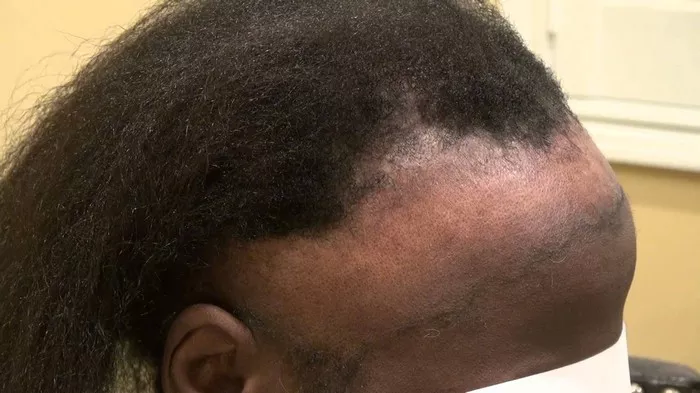Hair loss is a common concern for many individuals, but how do you differentiate between normal shedding and a potentially more serious issue? It’s natural to lose some hair each day, as part of the hair growth cycle. However, when the loss becomes excessive, it may be a cause for concern. In this article, we will explore the signs of excessive hair loss and provide insights into when it’s time to seek professional advice.
Daily Hair Loss and the Hair Growth Cycle
Understanding the hair growth cycle is crucial in determining whether you are experiencing excessive hair loss. Hair goes through three main phases: anagen (growth), catagen (transitional), and telogen (resting). It’s normal to lose 50 to 100 hairs per day during the telogen phase. However, if you notice an increase in hair shedding consistently, it may indicate a problem.
Thinning Hair and Widening Part Lines
One noticeable sign of excessive hair loss is a gradual thinning of the hair. Pay attention to the thickness of your hair strands and whether you observe widening part lines. If you notice a visible decrease in hair density or widening gaps along your part, it could be a red flag for excessive hair loss.
Increased Hair on Pillows and in the Shower Drain
Keep an eye on your surroundings, particularly your pillow and shower drain. If you find an unusually high amount of hair on your pillow in the morning or notice excessive hair in the shower drain after washing your hair, it may indicate more hair loss than usual. This could be a sign that your hair shedding has surpassed the normal range.
Receding Hairline or Bald Spots
Another clear indicator of excessive hair loss is the development of a receding hairline or bald spots. If you notice your hairline moving backward or bald patches forming on your scalp, it’s time to consult a healthcare professional. These can be signs of conditions such as male or female pattern baldness or alopecia.
Changes in Hair Texture
Pay attention to changes in the texture of your hair. If your once-thick and healthy strands start to feel finer and more brittle, it might be indicative of excessive hair loss. Changes in hair texture can be a result of various factors, including nutritional deficiencies or hormonal imbalances.
Sudden and Dramatic Hair Loss
While gradual hair loss can be a part of aging or a genetic predisposition, sudden and dramatic hair loss is often a cause for concern. If you experience a rapid increase in hair shedding within a short period, it could be triggered by factors such as stress, illness, or certain medications. Seeking professional advice promptly is crucial in such cases.
Scalp Conditions and Itching
Unhealthy scalp conditions, such as dandruff or psoriasis, can contribute to hair loss. If you notice persistent itching, flaking, or redness on your scalp, it’s essential to address these issues promptly. Scratching the scalp excessively can damage hair follicles, leading to increased hair loss.
Underlying Health Conditions
Excessive hair loss can be a symptom of underlying health conditions. Conditions such as thyroid disorders, hormonal imbalances, and nutritional deficiencies can contribute to hair loss. If you suspect that your hair loss is linked to a health issue, consult with a healthcare professional to determine the root cause.
When to Seek Professional Advice
If you observe multiple signs of excessive hair loss or if you’re concerned about the amount of hair you’re losing, it’s advisable to consult a healthcare provider or a dermatologist. They can conduct a thorough examination, review your medical history, and perform relevant tests to identify the underlying cause of your hair loss.
In conclusion
Understanding the signs of excessive hair loss is crucial for taking timely action. While some hair shedding is normal, persistent and noticeable changes in hair density, texture, and overall appearance may indicate a more significant issue. If in doubt, seeking professional advice is the best course of action to address the root cause and explore suitable treatment options. Remember, early intervention can make a significant difference in managing and potentially reversing excessive hair loss.


